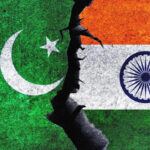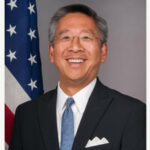In an economically interconnected and technologically inseparable world, India needs to have an open mind on trade
India’s international trade posture appeared to turn protectionist in the past week, with two indicators the government sent out. The first, which played out live on television was contained in the Union Budget announced by Finance Minister Nirmala Sitharaman on February 1. The other, that went virtually unnoticed, was that India declined to attend a meeting of trade negotiators in Bali (February 3-4) that was discussing the next step in the Association of Southeast Asian Nations (ASEAN)-led Regional Comprehensive Economic Partnership (RCEP) trade agreement.
Laying out the Budget for the year, Ms. Sitharaman made several references to the problems with free trade and preferential trade agreements (FTAs and PTAs), raised tariffs on the import of more than 50 items, and changed the Customs Act provisions substantially to penalise imports suspected to originate from third countries.
Ms. Sitharaman told Parliament: “It has been observed that imports under Free Trade Agreements (FTAs) are on the rise. Undue claims of FTA benefits have posed threat to domestic industry. Such imports require stringent checks,” adding that the government will ensure that all FTAs “are aligned to the conscious direction of our policy”.
While the motive may be to protect Indian markets from dumping — primarily by Chinese goods — the consequence of the changes will be to put Indian importers on notice and discourage imports in general. Describing a new chapter incorporated into the Act, the Finance Minister said the aim is to put “certain obligations on importers”, even as the government reserves the right to modify or cancel preferential tariffs and ban the import or export of any goods that it deems fit.
Rise in trade deficits
The government’s problem with FTAs was a key theme in its decision to walk out of the RCEP negotiations (of 16 countries) in November 2019, where Prime Minister Narendra Modi and members of his cabinet cited the rise in trade deficits with FTA partners. The government says it will now review all those agreements, in particular TAs signed with the 10-nation ASEAN grouping (FTA), Japan (Comprehensive Economic Partnership Agreement, or CEPA) and South Korea (CEPA), and wants to “correct asymmetry” in negotiations with new partners.
This is easier said than done. If India makes a complete break with RCEP, as its absence from the Bali meeting indicates it is determined to, negotiating the bilateral trade agreements (TAs) will not be a priority for the other countries until RCEP is done. The process of legal scrubbing is likely to take most of the year, and any talks with India will probably only follow that. It is also hard to see any of them being able to offer India a better deal bilaterally once they are bound into the multilateral RCEP agreement.
The case of the Comprehensive Economic Cooperation Agreement (CECA) being negotiated with Australia, which Mr. Modi hopes to give a boost to when Australian Prime Minister Scott Morrison visits, will be a difficult task, not the least due to its history. India and Australia began CECA talks in 2011. Mr. Modi and then-Australian Prime Minister Tony Abbott had even set a deadline of December 2015 to complete CECA. However, talks hit a dead end in September 2015. With the focus on RCEP, no progress has been made since then.
Tough road ahead
A similar scenario awaits the announcement of the India-United Kingdom FTA talks. British Prime Minister Boris Johnson is to visit Delhi in the next few months, while Mr. Modi heads to the U.K. in November for an environmental summit, and their bilateral bonhomie is expected to boost chances of an FTA post-Brexit. However, it is unlikely that the U.K. will actually be able to talk until next year, after terms for the U.K.’s full withdrawal from the European Union (EU) are completed.
For the same reason, India’s talks with the EU for a Bilateral Trade and Investment Agreement (BTIA) are unlikely to make much headway this year, although they will be in the spotlight when Mr. Modi travels to Brussels for the EU-India summit next month. There, both sides will have to decide how to revive from where they left off in 2013. Making the negotiations harder is the government’s decision to scrap all bilateral investment treaties with 57 countries including EU nations, and bringing in a new Bilateral Investment treaty (BIT) model in 2015. Only three countries: Kyrgyzstan, Belarus and most recently Brazil have agreed to sign a new investment treaty based on that model. Finally, there is the much anticipated resolution of U.S.-India trade issues ahead of the visit of U.S. President Donald Trump, expected in the last week of February that could also talks on an FTA. At present there have only been some “non-paper” talks on the issue, and given that the U.S. has expressed deep misgivings about India’s BIT model, these talks will also take several years to come to fruition.
No safety net
While the absence of a TA with any country does not mean that trade will not grow, other changes in the world trading order may become significant hindrances when added to this present scenario. The decline of multilateralism, accelerated by retrenchment of the U.S. and China’s intransigence have all meant the World Trade Organization (WTO) has lost steam as a world arbiter. This leaves states that are not part of arrangements without a safety net on dispute settlement mechanisms.
Second, the government has invoked the massive $57-billion trade deficit with China to explain protectionist measures, but it forgets its own trade surpluses with smaller economies, particularly in the neighbourhood, where Indian exports form more than 80% of total trade with Nepal, Bangladesh, Bhutan and Sri Lanka, respectively. Even with Pakistan, before India cancelled most favoured nation (MFN) status and Pakistan suspended all trade, in 2019, India’s exports stood at about $2.06 billion of a total of $2.55 billion.
Rise of regional agreements
Third, it is clear that most of the world is now divided into regional FTAs, including the North American Free Trade Agreement (NAFTA) for North America, the Southern Common Market (MERCOSUR for its Spanish initials) for South America, the EU, the Eurasian Economic Union (Russia and neighbours), the African Continental Free Trade Agreement (AfCFTA), the Gulf Cooperation Council (GCC) FTA in West Asia, and now the biggest of them all, RCEP, which minus India, represents a third of the world’s population and just under a third of its GDP.
With the door to RCEP all but closed, and the South Asian Association for Regional Cooperation (SAARC) virtually abandoned, India is not a part of any regional FTA. Finally, the trend across the world does not favour trade in services the way it does in goods, as most countries have turned migration-averse. India’s strength in the services sector and its demand for more mobility for Indian employees, is thus becoming another sticky point in FTA negotiations.
The debate over trade is as much about India’s leadership ambitions in the world, and the factors that could inhibit its rise. It would be hard to argue that India can rise in Asia without closer trade links with the East or the backing of South Asia.
India’s demographic might is certainly attractive for international investors, but only if that vast market has purchasing power and is not riven by social unrest and instability. Historically, the decline of colonial powers and more ancient empires can be traced to times when they turned inward and disengaged from foreign trade. It flows logically that in the modern, economically interconnected and technologically inseparable world, India’s global rise cannot but be accompanied by an open mind on trade as well.
The high cost of raising trade walls
In an economically interconnected and technologically inseparable world, India needs to have an open mind on trade
India’s international trade posture appeared to turn protectionist in the past week, with two indicators the government sent out. The first, which played out live on television was contained in the Union Budget announced by Finance Minister Nirmala Sitharaman on February 1. The other, that went virtually unnoticed, was that India declined to attend a meeting of trade negotiators in Bali (February 3-4) that was discussing the next step in the Association of Southeast Asian Nations (ASEAN)-led Regional Comprehensive Economic Partnership (RCEP) trade agreement.
Laying out the Budget for the year, Ms. Sitharaman made several references to the problems with free trade and preferential trade agreements (FTAs and PTAs), raised tariffs on the import of more than 50 items, and changed the Customs Act provisions substantially to penalise imports suspected to originate from third countries.
Ms. Sitharaman told Parliament: “It has been observed that imports under Free Trade Agreements (FTAs) are on the rise. Undue claims of FTA benefits have posed threat to domestic industry. Such imports require stringent checks,” adding that the government will ensure that all FTAs “are aligned to the conscious direction of our policy”.
While the motive may be to protect Indian markets from dumping — primarily by Chinese goods — the consequence of the changes will be to put Indian importers on notice and discourage imports in general. Describing a new chapter incorporated into the Act, the Finance Minister said the aim is to put “certain obligations on importers”, even as the government reserves the right to modify or cancel preferential tariffs and ban the import or export of any goods that it deems fit.
Rise in trade deficits
The government’s problem with FTAs was a key theme in its decision to walk out of the RCEP negotiations (of 16 countries) in November 2019, where Prime Minister Narendra Modi and members of his cabinet cited the rise in trade deficits with FTA partners. The government says it will now review all those agreements, in particular TAs signed with the 10-nation ASEAN grouping (FTA), Japan (Comprehensive Economic Partnership Agreement, or CEPA) and South Korea (CEPA), and wants to “correct asymmetry” in negotiations with new partners.
This is easier said than done. If India makes a complete break with RCEP, as its absence from the Bali meeting indicates it is determined to, negotiating the bilateral trade agreements (TAs) will not be a priority for the other countries until RCEP is done. The process of legal scrubbing is likely to take most of the year, and any talks with India will probably only follow that. It is also hard to see any of them being able to offer India a better deal bilaterally once they are bound into the multilateral RCEP agreement.
The case of the Comprehensive Economic Cooperation Agreement (CECA) being negotiated with Australia, which Mr. Modi hopes to give a boost to when Australian Prime Minister Scott Morrison visits, will be a difficult task, not the least due to its history. India and Australia began CECA talks in 2011. Mr. Modi and then-Australian Prime Minister Tony Abbott had even set a deadline of December 2015 to complete CECA. However, talks hit a dead end in September 2015. With the focus on RCEP, no progress has been made since then.
Tough road ahead
A similar scenario awaits the announcement of the India-United Kingdom FTA talks. British Prime Minister Boris Johnson is to visit Delhi in the next few months, while Mr. Modi heads to the U.K. in November for an environmental summit, and their bilateral bonhomie is expected to boost chances of an FTA post-Brexit. However, it is unlikely that the U.K. will actually be able to talk until next year, after terms for the U.K.’s full withdrawal from the European Union (EU) are completed.
For the same reason, India’s talks with the EU for a Bilateral Trade and Investment Agreement (BTIA) are unlikely to make much headway this year, although they will be in the spotlight when Mr. Modi travels to Brussels for the EU-India summit next month. There, both sides will have to decide how to revive from where they left off in 2013. Making the negotiations harder is the government’s decision to scrap all bilateral investment treaties with 57 countries including EU nations, and bringing in a new Bilateral Investment treaty (BIT) model in 2015. Only three countries: Kyrgyzstan, Belarus and most recently Brazil have agreed to sign a new investment treaty based on that model. Finally, there is the much anticipated resolution of U.S.-India trade issues ahead of the visit of U.S. President Donald Trump, expected in the last week of February that could also talks on an FTA. At present there have only been some “non-paper” talks on the issue, and given that the U.S. has expressed deep misgivings about India’s BIT model, these talks will also take several years to come to fruition.
No safety net
While the absence of a TA with any country does not mean that trade will not grow, other changes in the world trading order may become significant hindrances when added to this present scenario. The decline of multilateralism, accelerated by retrenchment of the U.S. and China’s intransigence have all meant the World Trade Organization (WTO) has lost steam as a world arbiter. This leaves states that are not part of arrangements without a safety net on dispute settlement mechanisms.
Second, the government has invoked the massive $57-billion trade deficit with China to explain protectionist measures, but it forgets its own trade surpluses with smaller economies, particularly in the neighbourhood, where Indian exports form more than 80% of total trade with Nepal, Bangladesh, Bhutan and Sri Lanka, respectively. Even with Pakistan, before India cancelled most favoured nation (MFN) status and Pakistan suspended all trade, in 2019, India’s exports stood at about $2.06 billion of a total of $2.55 billion.
Rise of regional agreements
Third, it is clear that most of the world is now divided into regional FTAs, including the North American Free Trade Agreement (NAFTA) for North America, the Southern Common Market (MERCOSUR for its Spanish initials) for South America, the EU, the Eurasian Economic Union (Russia and neighbours), the African Continental Free Trade Agreement (AfCFTA), the Gulf Cooperation Council (GCC) FTA in West Asia, and now the biggest of them all, RCEP, which minus India, represents a third of the world’s population and just under a third of its GDP.
With the door to RCEP all but closed, and the South Asian Association for Regional Cooperation (SAARC) virtually abandoned, India is not a part of any regional FTA. Finally, the trend across the world does not favour trade in services the way it does in goods, as most countries have turned migration-averse. India’s strength in the services sector and its demand for more mobility for Indian employees, is thus becoming another sticky point in FTA negotiations.
The debate over trade is as much about India’s leadership ambitions in the world, and the factors that could inhibit its rise. It would be hard to argue that India can rise in Asia without closer trade links with the East or the backing of South Asia.
India’s demographic might is certainly attractive for international investors, but only if that vast market has purchasing power and is not riven by social unrest and instability. Historically, the decline of colonial powers and more ancient empires can be traced to times when they turned inward and disengaged from foreign trade. It flows logically that in the modern, economically interconnected and technologically inseparable world, India’s global rise cannot but be accompanied by an open mind on trade as well.






NO COMMENT